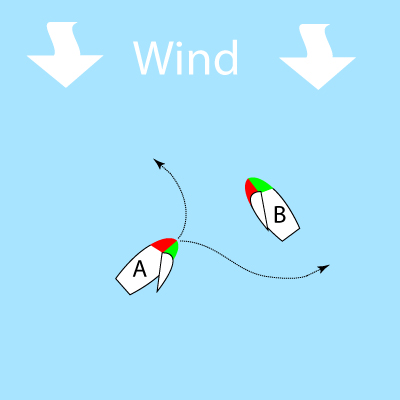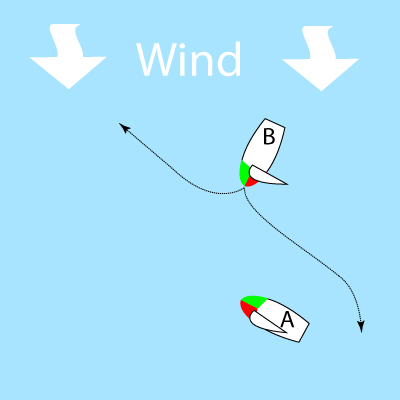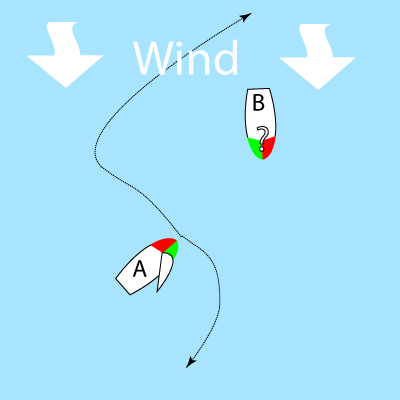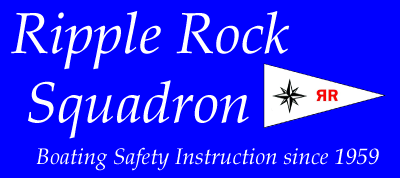Introduction to Collision Regulations - There is a risk of collision, what do we do now? (two vessels under sail in sight of each other)
Caution:
- The following information has been simplified so we can give you a basic introduction using (mostly) non-technical language. Review the actual Regulations for in-depth information (we have noted the rule number, in square brackets, where practical). The Regulations can be found on our links page.
- A lot of effort has been made to ensure the information is correct, but errors may occur (If you find one please leave a message for our Webmaster).
- This information is intended for boaters on the BC Coast; it does not address modifications for vessels operating in the Great Lakes Basin.
- These diagrams are not to scale. To allow both vessels to be seen in the graphic, they have been moved much closer together than is safe in the real world.
- The suggested course alterations shown in the diagrams are also not to scale and only give an approximate indication of what is required.
- These situations are very basic. They are simulating open water encounters, with only two straight forward vessels under sail. There are no other vessels, navigation hazards, currents, narrow channels, traffic separation schemes etc. to take into account.
The following is based on vessels being within sight of each other. See Action on risk of collision in restricted visibilty otherwise.
Once it has been determined there is a risk of collision, in most cases, the Collision Regulations require one vessel to do something to avoid the collision (the "Give Way" vessel), while the other vessel continues its course and speed (the "Stand On" vessel). The rules on who is the Give Way or Stand On vessel is different for vessels under sail, as they are constrained in what course they can make relative to the wind. Therefore their rules involve wind direction. There are three basic situations.
In our first case, each vessel has the wind on a different side. [Rule 12 a (i)]

In this case the vessel with the wind on the port side (A) is the Give Way vessel, and must keep clear of vessel B which has the wind on its starboard side and so is the Stand On vessel.
In the second case, both vessels have wind the wind on the same side (they are on the same tack) [Rule 12 a (ii)]

In this case, the vessel to windward (B) is the Give Way vessel, and must keep clear of the vessel to leeward (A) which is the Stand On vessel.
In the final case, a vessel has the wind on the Port side, and is unable to tell whether the other vessel has the wind on the port or starboard side. [Rule 12 a (iii)]

In this case A is the Give Way vessel, and must stay clear of B (the Stand On vessel)
